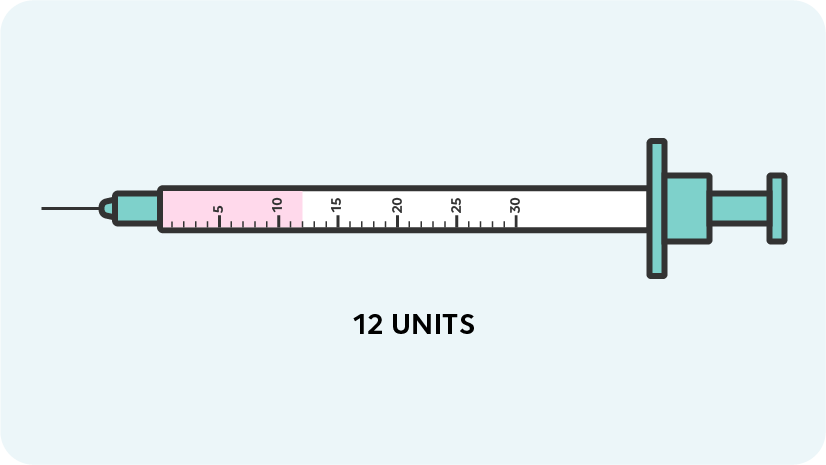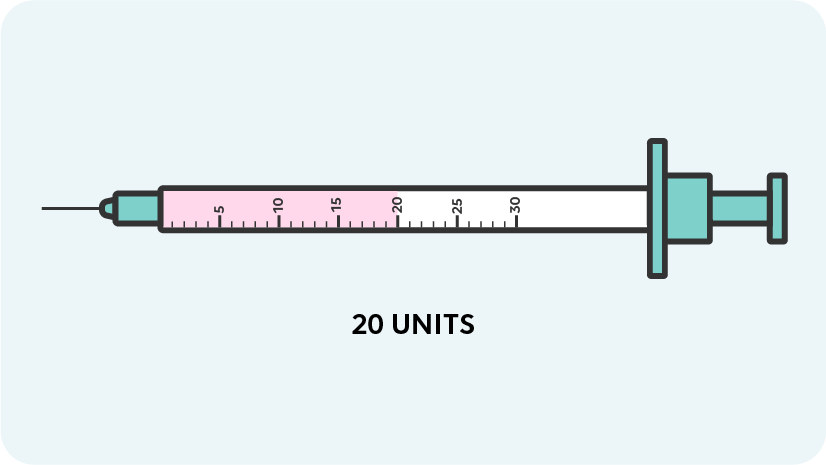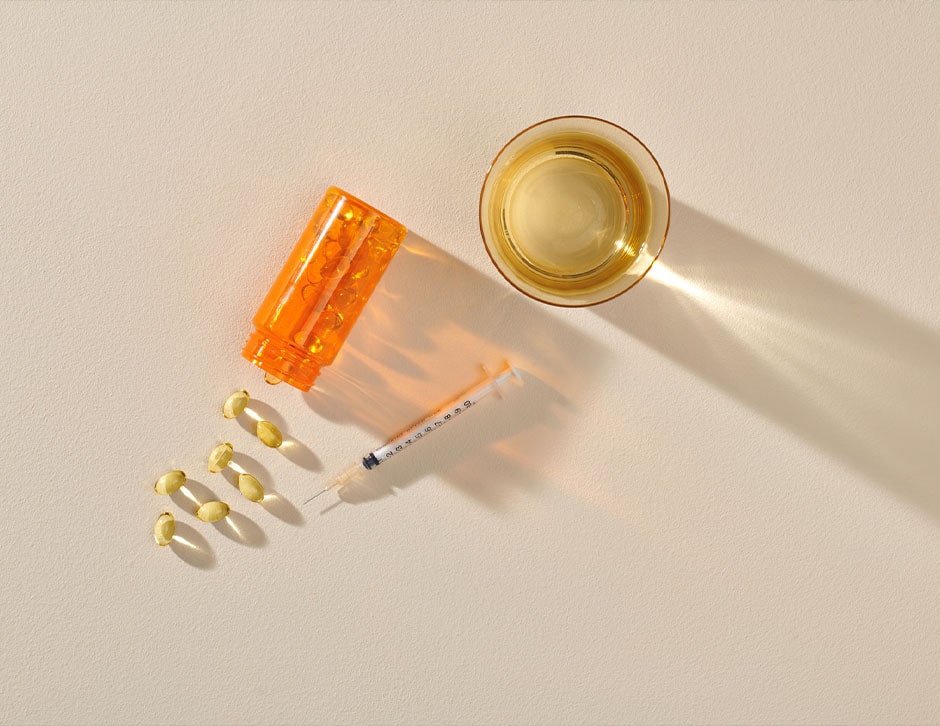Compounded Semaglutide Product Guide
The information presented here is only applicable for non-diabetics who have been prescribed a GLP-1 prescription after their AgelessRx prescriber deemed it appropriate.
Quick tips
Here are some simple steps to help you get the most from each dose:
- Refrigerate your vials upon arrival
- Use with a reduced-calorie meal plan & exercise
- Take on the same day each week
- Can be taken with or without food
- Rotate injection sites every week
- Be sure to properly discard your vials & syringes
Getting started
When you first receive your prescription, ensure proper storage guidelines to maintain the quality of the solution.
Follow the instructions for properly drawing and administering your injection.
Always dose according to your doctor-guided titration schedule.
Storage
Although storage instructions from your pharmacy may vary, we always recommend storing in the refrigerator upon delivery and in-between each use to help maintain the quality of the solution.
Once you pierce the vial, the solution will last for 28 days. You must discard pierced vials after 28 days, even if there is still some solution remaining—this applies to all multi-dose vials (MDVs). Unpierced vials will last up to 180 days.
Upon receiving your medication, check the temperature of the vials with the back of your hand. If it feels hot to the touch, please contact us immediately.
You may safely travel with your vials so long as the above conditions are met while traveling. We always recommend traveling with a refrigerated storage case for your medication Once the top of the vial has been pierced, you must discard the vial after 28 days, even if there is still some solution remaining.
Drawing and administering Compounded Semaglutide
How to draw your solution
Before your first use, take the time to review how to properly draw your solution.
Next, ensure that you are drawing the correct amount of solution according to your titration schedule. Your current dose will always be displayed on your vial – use this as a reminder before you begin.
It is important to sterilize the top of the vial with an alcohol wipe each time before drawing up the solution.
How to measure units on your syringe
If you’re new to subcutaneous injections, follow this quick guide to understand the measurements on your syringe.
Your weekly doses are measured in milliliters (ml) to units. Before getting started, check to see how many units are in your weekly dose.
The label on your subcutaneous syringe shows units. Each unit represents 0.01ml, so every 10 units represents 0.1ml.
Each small line on the syringe represents 1 unit, and each large line represents 10 units. So, if your dose calls for 20 units, simply draw your solution up to the line that reads “20.”
If your weekly dose calls for a measurement not clearly labeled on the syringe (like 25 units), pay close attention to the markers between the large lines when drawing up your dose. There may be even smaller measurement lines on the syringe that are more difficult to see. Count these carefully as you draw up your dose to ensure the most accurate measurement.


How to administer your solution
You’ll take your medication via subcutaneous injection, which means that you will inject the solution into a fatty layer of tissue, such as your abdomen or your thigh. If you’re new to self-administered injections, take the time to review how to properly administer your injection before proceeding.
As a general rule, you should grip the syringe with your dominant hand, and grasp the injection site with the other hand.
If you can grasp at least 2 inches of skin, then deliver the injection at a 90° angle (or, straight in). If you cannot grasp at least 2 inches of skin, deliver the injection at a 45° angle.
To avoid irritation, try switching injection sites each week. You can take your medication with or without food, and at any time of day, but try to be as consistent as possible to ensure the best outcomes.
After you have administered your injection, discard the needle and syringe in an FDA-approved sharps container. Never reuse the needle or the syringe once it has been used.
Compounded Semaglutide titration schedule
Compounded Semaglutide is always prescribed with a doctor-guided titration schedule to gradually introduce the medication to your body. This way, you have the best opportunity to experience the greatest benefits possible while reducing side effects.
Your titration schedule is always available on your AgelessRx portal.
If you miss taking Compounded Semaglutide on your scheduled day, you can still take your dose whenever you can, so long as it’s within 5 days of the missed dose. You can then resume your normal dosing schedule. If more than 5 days have elapsed, skip this dose and take it on your next normally scheduled day. Never double up on doses if you missed one the previous week.
Common side effects
Compounded Semaglutide has not been evaluated by the FDA, but AgelessRx patients have reported the following side effects: nausea, vomiting, diarrhea, stomach pain, and constipation. These normally go away on their own within a few days, or up to 2-3 weeks.
To help prevent side effects from occurring or persisting, try the following:
- Eat slower & at more regular intervals throughout the day
- Try to take your medication at about the same time of day each week
- Drink only water or clear, unsweetened beverages
- Avoid fried, greasy foods in favor of healthier, low-fat options
Dehydration may also be an indirect side effect of Compounded Semaglutide for those experiencing vomiting and diarrhea. If you do experience these side effects, make sure that you are drinking plenty of water and fluids with electrolytes to avoid dehydration.
For some patients, taking probiotics may help reduce gastrointestinal side effects, but results may vary. Peppermint and ginger may also help reduce side effects.
This is only a summary of potential side effects and how to address them. For more information, please reference the Mayo Clinic’s Semaglutide resources, or ask your prescriber.
If you’re prescribed Compounded Semaglutide + Glycine, please review WebMD’s Glycine resources to understand more about its side effects and important safety information, or ask your prescriber.
Serious side effects
The following rare but serious effects may be possible:
- Thyroid C-cell tumors
- Diabetic retinopathy
- Hypoglycemia
- Kidney problems
- Gallbladder problems
- Pancreatitis
- Worsening of mood
For a full list of potential warning signs for these conditions, please see Mayo Clinic’s Semaglutide resources.
Important safety information
Compounded Semaglutide should not be used by anyone who has a personal or family history of medullary thyroid carcinoma (MTC) or multiple endocrine neoplasia syndrome 2 (MEN2).
Do not use Compounded Semaglutide if you are pregnant, breastfeeding, or planning to become pregnant or breastfeed. If you become pregnant while taking Compounded Semaglutide, consult your prescriber before continuing with your next dose.
If you’re prescribed Compounded Semaglutide + Glycine, please inform your prescriber if you’re taking clozapine (Clozaril). Glycine may interact with clozapine and reduce its effects.
Though rare, allergic reactions are still possible. If you notice any shortness of breath or swelling around your face, tongue, or throat, stop use and contact emergency services right away. Mild allergic reactions around the injection site are normal and not cause for emergency.
As with any prescription medication, the dose prescribed is for you and you alone. Do not, under any circumstances, allow anyone else to use your Compounded Semaglutide.



